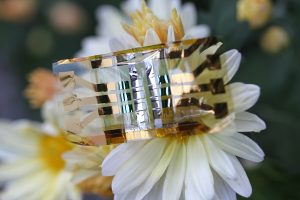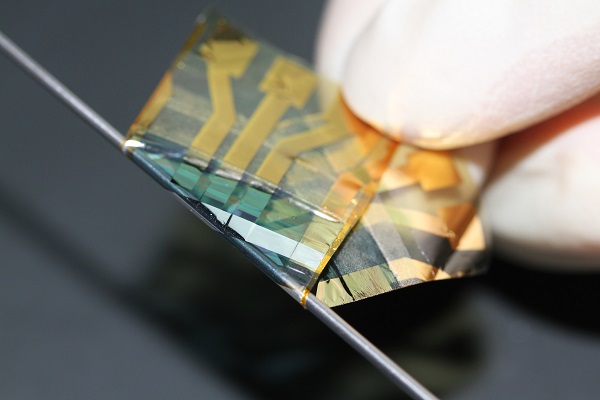Ultralight, flexible solar panels could soon be wearable
A pair of research papers published in Joule and Proceedings of the National Academy of Sciences of the USA (PNAS), has developed an ultrathin, photovoltaic cell that has high efficiency, supreme mechanical bending and stretching capacity, and capabilities to provide a long-lasting power source.
In the Joule paper, researchers successfully developed mechanically robust photo-absorber materials that can make ultra-flexible solar cells. These cells can achieve a very high percentage of power conversion efficiency and retention after 1,000 blending and stretching cycles.
ADVERTISEMENT
“Power conversion efficiency considers how much solar energy can be converted into electricity. The solar energy illuminated on Earth is 1,000W per metre²,” Monash University’s Department of Materials Science and Engineering Research Fellow Dr Wenchao Huang says.
“Our device can produce 130W of electricity per square metre. The 13% efficiency we were able to achieve is one of the highest efficiencies in organic solar cells.”
In the PNAS paper, tests show that when this solar cell was treated with a special method, its performance had only dropped 4.8% after a staggering 4,736 hours; could run for more than 20,000 hours – about 2.5 years – with minimal degradation, and had an estimated shelf life of 11.5 years.
The solar panel is around 2cm² and the size of an Australian 5c piece. It’s light enough to be supported by a flower petal and can generate 9.9W/g.
With further testing, the device could be used as a replacement for batteries in a number of technologies like mobile phones, watches, IoT and in biosensors.
“Currently, silicon solar cells are the dominant technology in the photovoltaic market, which are commonly found in rooftop installations. But, their brittle nature means solar cells exhibit poor performance when bent or stretched,” Dr Huang says.
“Here, we have developed an ultra-flexible organic solar cell with a total thickness of just three micrometres – one of the thinnest solar cells in the world.
“Our ultra-flexible solar cells can simultaneously achieve an improved power conversion efficiency, excellent mechanical properties and robust stability. This makes them a very promising candidate as a power source in wearable electronics to realise long-term monitoring of various physiological signals, such as heart and breathing rates.”
Despite its size, these low-cost solar cells can be reproduced easily with printing technology continuously evolving, making them ideal for the fast tracking and mass production of wearable technology.
-
ADVERTISEMENT
-
ADVERTISEMENT


